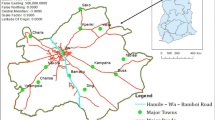Abstract
Urban–rural integration and coordinated development have become strategic tasks for contemporary China. An increasing number of studies have focused on rural areas from different perspectives. The rural revitalization strategy, announced during the 19th CPC National Congress, tasked scholars in urban and rural studies to increase their focus on the development of rural regions. This paper identifies gaps in existing research on China’s rural planning in three areas, namely the relevant legislation, governance mechanisms, and technological means. First, previous research failed to clarify how different levels of legislation impact development in rural areas, resulting in a lack of clarity concerning the legal foundations of rural planning. Second, relevant research fails to highlight the self-governing characteristics of rural communities. There is a lack of literature on the process that occurs between the delegation of planning and the implementation of these plans. Consequently, conflicts and contradictions between local autonomy and administrative interventions are neglected. Third, current rural planning generally adopts the urban planning methods of investigation, study design and formulation; however, it disregards the attributes specific to rural planning, especially where the two factors mentioned above are concerned. This paper contributes a critical approach to research in rural planning. It identifies that coherent and reasonable rural planning methodologies can only be developed through a joint consideration of the legislation, governance mechanisms and planning technologies. This type of approach can accommodate the current condition of urban–rural relations in China and lay a foundation for rural development through the integration of planning research and practice.
Notes *This research project is funded by National Natural Science Foundation of China (Approval Number: 51778436).
Access this chapter
Tax calculation will be finalised at checkout
Purchases are for personal use only
Similar content being viewed by others
References
Chen, F. (2011). An approach to the rule of law in village planning under the background of urban and rural coordination. Journal of Suzhou University (social Science Edition), 02, 115–119.
Chen, C. (2016). Three-power distribution” in rural land: functional roles, division of powers, and institutional construction. China Politics & Resources, Environment, 26(4), 135–141.
Du, Z. (2003). Culture, power, and country: North China rural areas 1900–1942: 1900–1942 NIAN DE HUA BEI NONG CUN. [2] Edition. Jiangsu People's Publishing House.
Fan, L., & Lei, C. (2010). On the legal implementation strategy of rural planning in China: Based on the discussion of urban and rural planning law. The Planner, 26(1), 5–9.
Gu, C., & Wu, L. (2008) A summary of the main achievements of china's urbanization research. Urban Issues (12), 2–12.
Huang, K. (2011). Influence of rural land system on the urbanization of new generation migrant workers and institutional innovation. Research of Agricultural Modernization, 32(2), 196–199.
Huang, X. &Zhang, X. (2010). A preliminary study on the construction of new rural planning system in the background of the integrated development of urban and rural areas: A case study of Wuhan City. Planner 26(07), 76–79.
Jiang, W., & Yuan, N. (2016). A study on the compilation of county rural construction planning pilots: A case study of Zengcheng District of Guangzhou. Guangdong Province. Small Town Construction, 6, 33–39.
Li, W. (2010). Research on the construction of content system of village planning. Suzhou University of Science and Technology, 2010.
Liu, S. (2012). Discussion on the planning of village planning in Towns with Dense Areas – Taking Guangzhou as an Example. // 2012 China Urban Planning Annual Conference 2012.
Lu, X., & Sun, M. (2007). Urban and rural planning system adaptation based on innovation and development of rural areas in south of Jiangsu Province. City Planning, 31(7), 73–76.
Ma, C., Li, X., et al. (2015). Development logic and realization path of rural multi-subject cooperative governance. Journal of Shanxi Agricultural University (social Science Edition), 14(7), 674–678.
Meng, Y., Dai, S., Wen, X. (2015). The problems and countermeasures faced by the current rural planning practice in China. Planner, 2,143–147.
Qiao, J., Hong, L., & Wang, Y. (2016). Levels and logic of rural planning in the context of ecology and human context: Based on the investigation and practice of mountainous areas in Western Hubei Province. Urban Development Research, 23(6), 88–97.
Qiu, H., & X, J. (2004). Local government behavior in technological innovation of industrial clusters. Management World, (10), 36–46.
Shao, L., & Zhou, D. (2012). Jinan urban and rural overall planning system for planning authority. The Planner, 28(4), 46–51.
Shen, M. (2015). Rural governance driven by rural projects and planning: An empirical study based on Nanjing Jiangning. City Planning, 39(10), 83–90.
Sun, Z. (2014). Study on the governance structure of rural China in contemporary China: Current situation and analysis. China Social Sciences Net.
Tang, M. (2006). Two basic issues concerning the improvement of the legal system of villagers’ autonomy. Journal of Legal Research, 2, 3–8.
Wen, J., & Wen, W. (2015). Research on the problem of rural governance and planning in China. Modern Urban Research, 4, 16–26.
Xing, H. (2010). Characteristics of rural land use planning laws insome countries and regions and their use for reference. International Urban Planning, 25(2), 26–30.
Zhang, S. (2014). Rural planning: Characteristics and difficulties. City Planning,.318(2), 17–21
Zhou, L., & Yu, C. (2014). The international experience of rural planning and construction and the professional thinking in Jiangsu Practice. International Urban Planning, 29(6), 1–7.
Author information
Authors and Affiliations
Corresponding author
Editor information
Editors and Affiliations
Rights and permissions
Copyright information
© 2021 Springer Nature Switzerland AG
About this chapter
Cite this chapter
Jiehao, Z., Fan, Y., Tianyang, Z. (2021). An Argument Concerning Rural Planning in Contemporary China from the Perspectives of Law, Institutional Practice and Implementation Methods. In: Li, W., Hu, L., Cao, J. (eds) Human-Centered Urban Planning and Design in China: Volume I . GeoJournal Library, vol 129. Springer, Cham. https://doi.org/10.1007/978-3-030-83856-0_17
Download citation
DOI: https://doi.org/10.1007/978-3-030-83856-0_17
Published:
Publisher Name: Springer, Cham
Print ISBN: 978-3-030-83855-3
Online ISBN: 978-3-030-83856-0
eBook Packages: Social SciencesSocial Sciences (R0)



